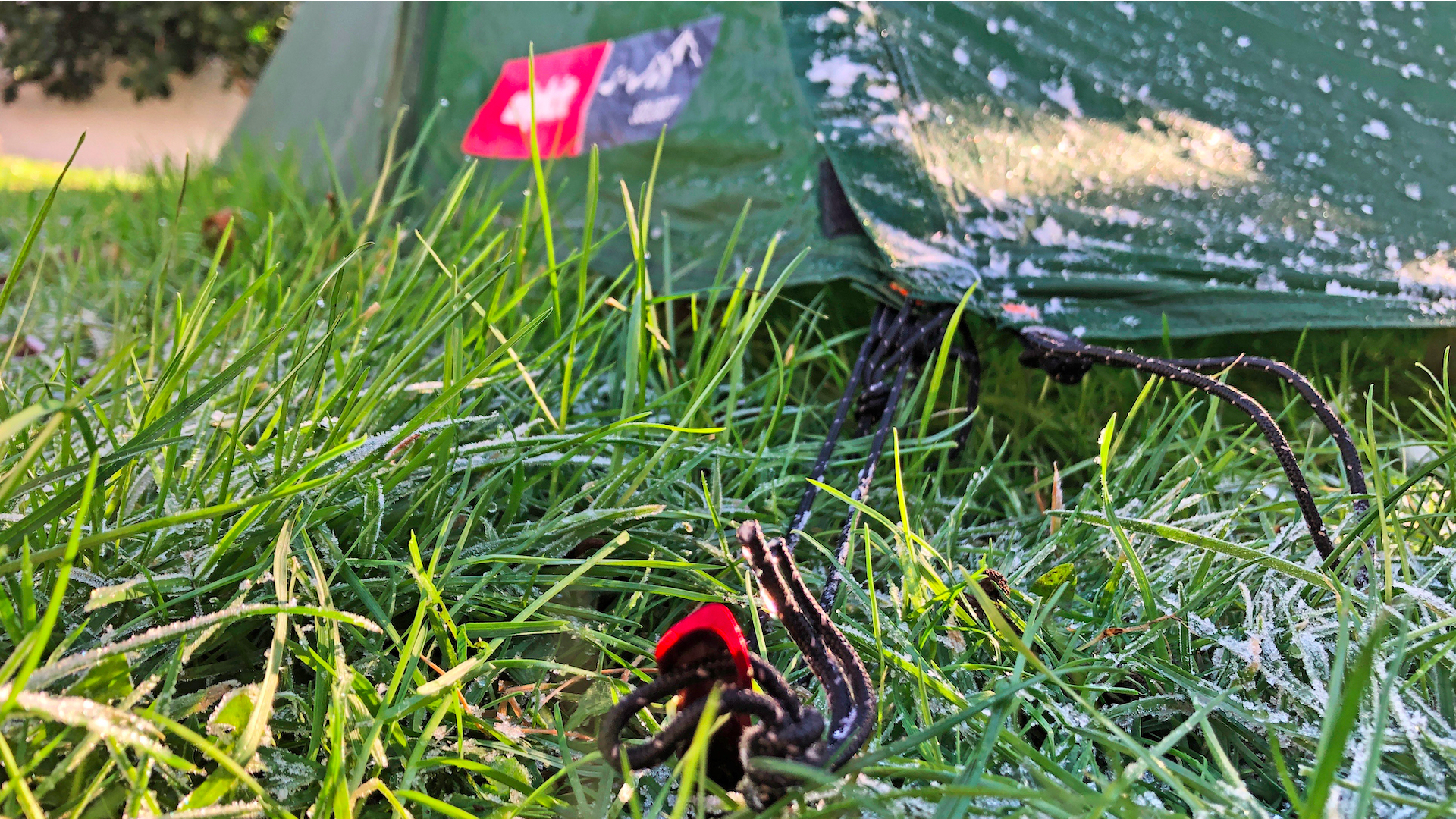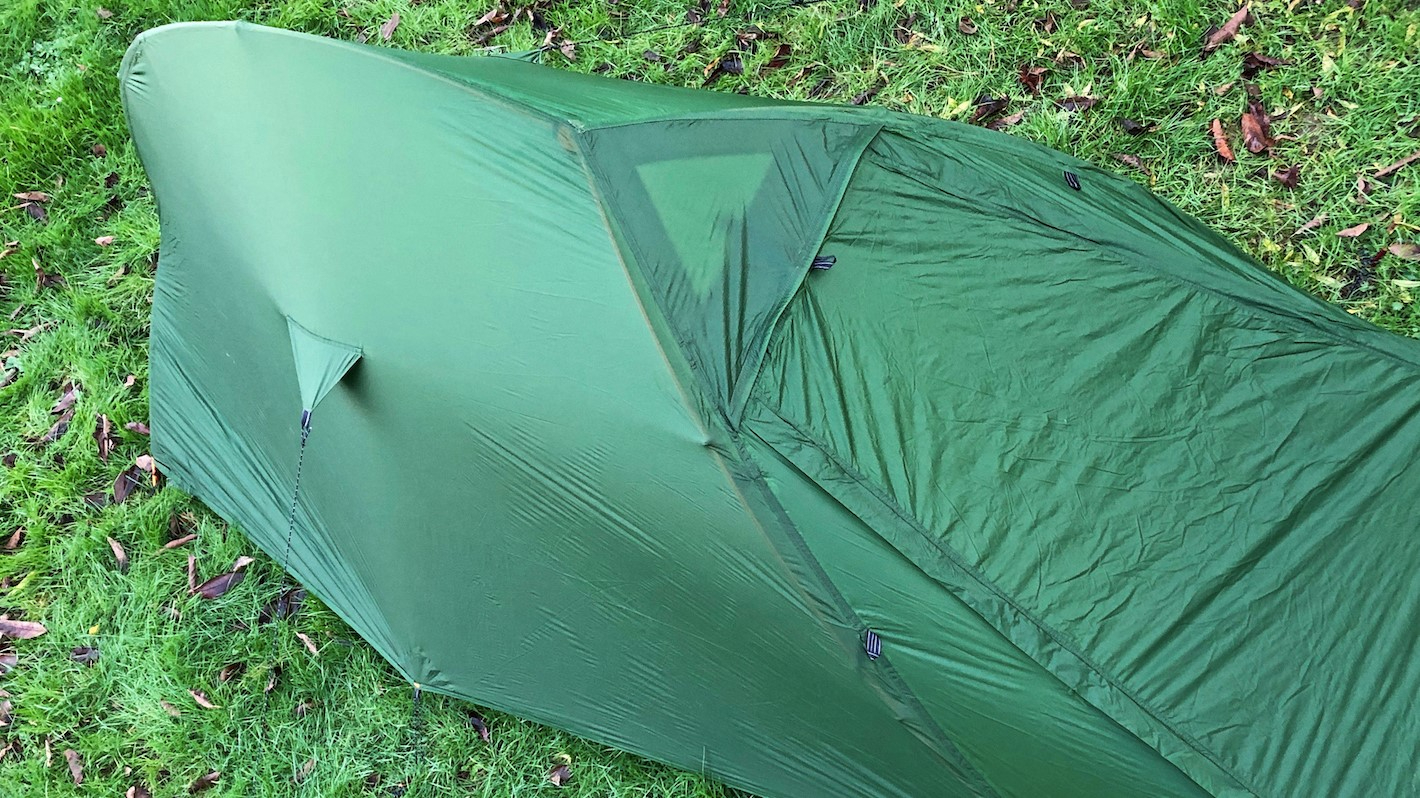
Alpkit Soloist: first impressions
The Alpkit Soloist is a lightweight but protective one-person tent for backpackers looking for a packable and reasonably substantial shelter that will comfortably accommodate them on overnight and multi-day escapades for a good 10 months of the year.
• List price: £139.99 (UK) / not currently available in US
• Style: Lightweight, one-person backpacking pole tent
• Pack size: Regular: 42cm x 12cm / 16.5in x 4.7in; XL: 44cm x 13cm / 17.3in x 5.1in
• Length of interior when pitched: Regular: 200cm / 78.7in; XL: 220cm / 86.6in
• Width of interior when pitched: 95cm to 77cm / 37.4in to 30.3in (tapered front to back)
• Height of interior when pitched: 95cm / 37.4in
• Weight: Regular: 1,200g / 2lb 10oz; XL: 1,318g / 2lb 14.5oz
• Capacity: One person
• Vestibules: One
• Flysheet hydrostatic head rating: 3,000mm
• Floor hydrostatic head rating: 5,000mm
• Pitch time: 5mins-10mins
It’s not – and neither does it claim to be – a tent for minimalists seeking ultralight performance, nor is it really compact enough for most bikepacking adventures (unless you’re packing panniers, in which case it will be ideal). But for stage-orientated trekking jaunts, thru-hiking trips and wild camping forays it’s one of the best one-person tents on the market – especially considering its extremely reasonable retail price.
The clever semi-geodesic design employs a single-pole frame that quickly clips together to form a double-ended Y shape. The four feet slot into rings located on each corner of the inner tent, which can then be clipped up onto the frame. The flysheet goes over the top, and its corners are, in turn, secured under each of the four feet, and then pulled tight. Eleven lightweight V-shaped alloy pegs allow you to further tension and secure the flysheet, which incorporates a reasonably generous porch area.
By using a footprint specific to this tent (sold separately), which also fits around the bottom of the poles, you can put the Soloist up inner or outer first, which is ideal in wet weather. Equally, in good clear-sky conditions, you can forgo the flysheet altogether and enjoy looking up at the moon through the mesh during the night.
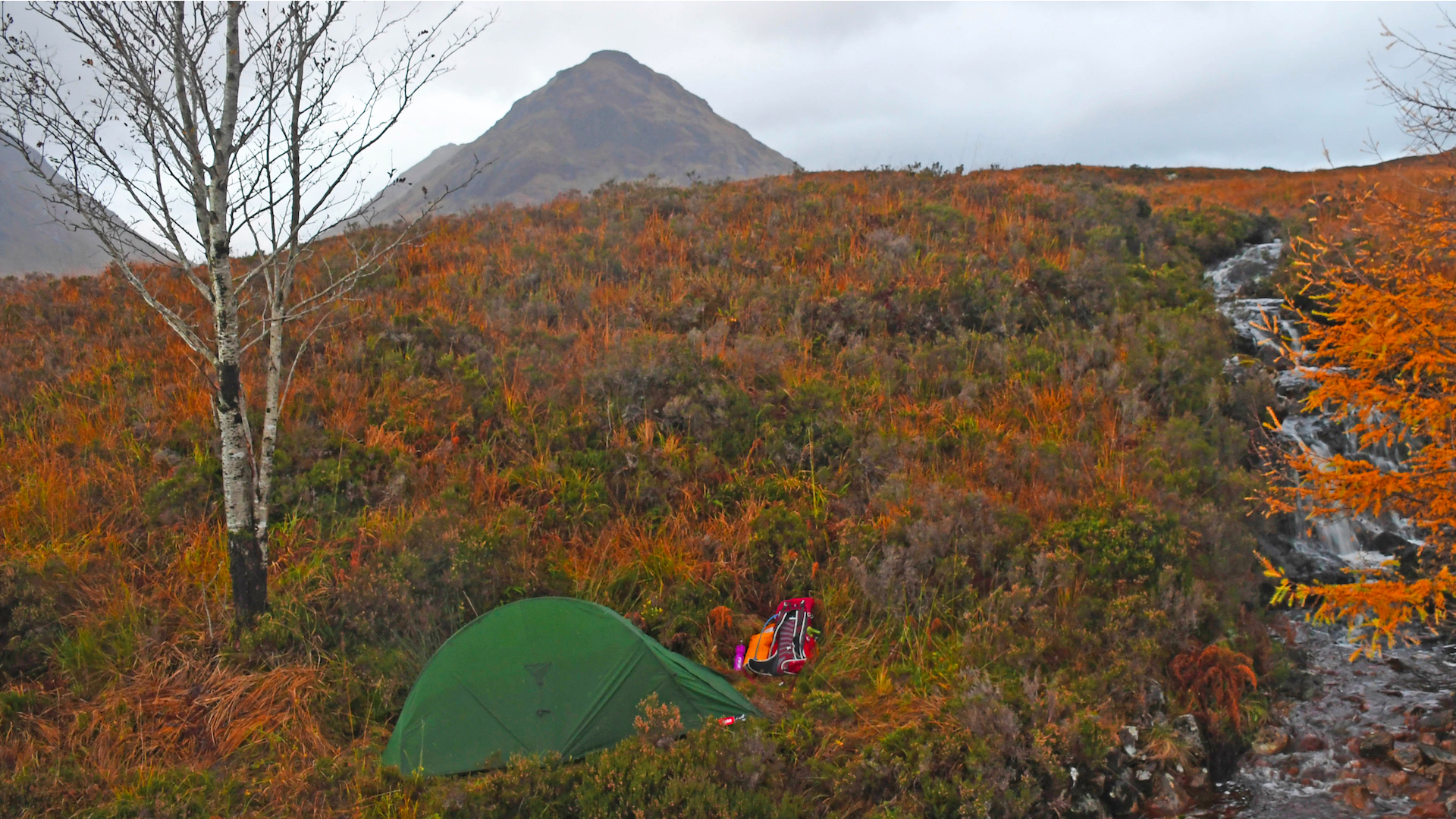
This uncomplicated pitching procedure means you can have tent up and a stove going with five to ten minutes (depending on how many times you’ve done it before). Similarly, the break down is speedy and simple, and it’s easy to squeeze the rolled-up shelter into the bag and get on the trail quicksmart in the morning.
The overall design and look of the tent is functional and smart. The color of the fly sheet, for example, is nice and natural, so you can be discreet when wild camping and avoid any unwanted attention.
Once it’s up there’s plenty of space inside the Soloist for one person and a reasonable amount of gear, thanks to the tapered shape of the tent. The interior is 95cm high, so there’s ample room to sit up and move around, and at 2m in length, the standard size is big enough for most people to lie down comfortably, but taller backpackers can opt for the extra large version.
The porch is spacious enough to take a large pack and muddy boots, but it doesn’t offer enough room to safely get a stove going with the zip done up.
Alpkit Soloist: in the field
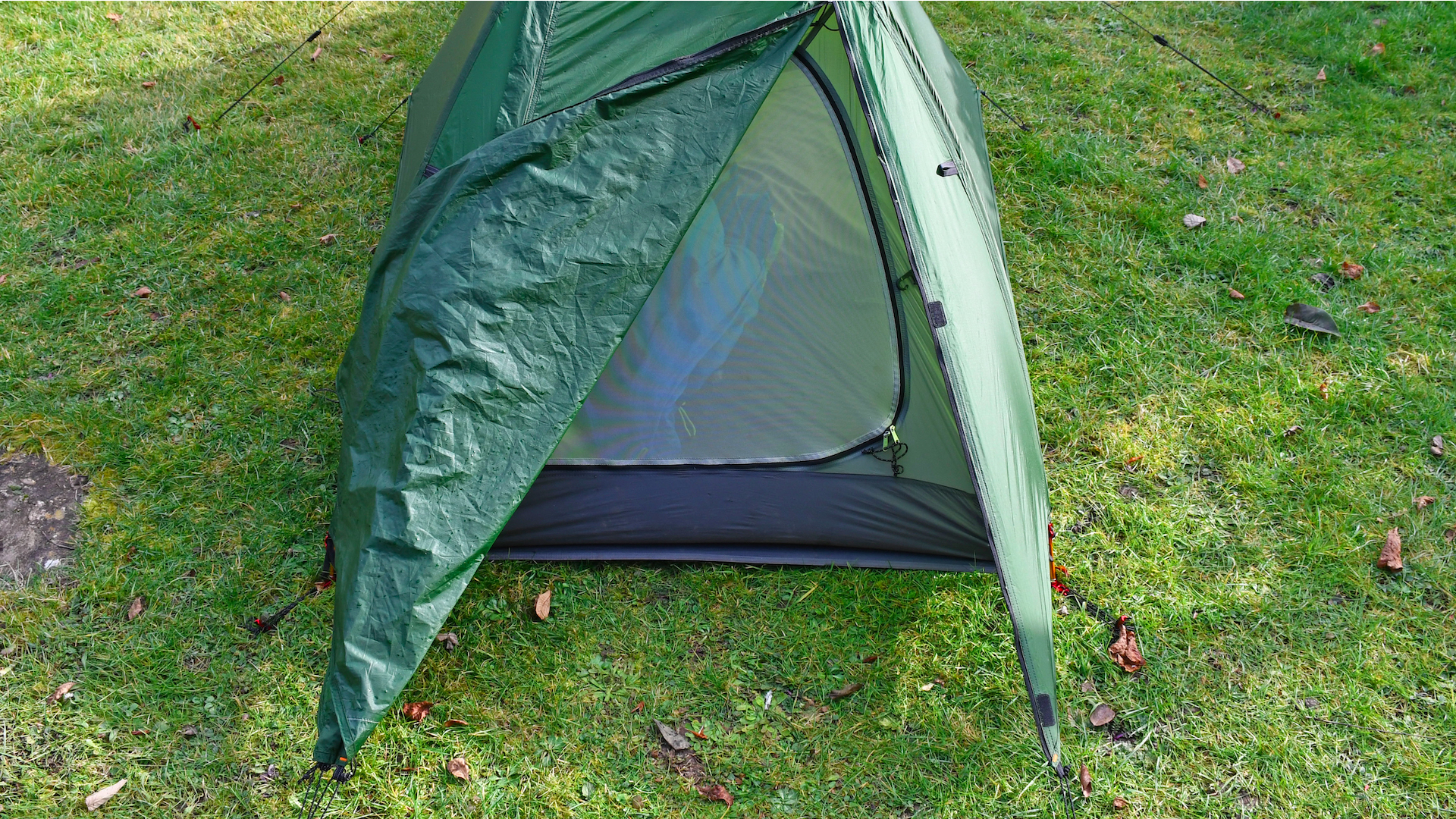
Over the last eight months I have taken the Alpkit Soloist on several backpacking trips, including a fastpacking adventure along the West Highland Way in Scotland stupidly late in the season, and also used it on many backyard campouts – across fall, winter and spring. In all of these scenarios, it has performed perfectly – even in the midst of winter, when outside temperatures went well south of zero.
The Soloist doesn’t claim to be a four-season tent, and the mesh used in the inner (to keep the carry weight down) does let in cool breezes. But paired with a four-season sleeping bag and good camping mat with a high R-value, it can be used in all but the most extreme weather. That said, I would recommend investing in the footprint if you intend using the tent outside of summer.
The hydrostatic head (HH) rating isn’t as high as some other backpacking tents I’ve tested, but thus far it has kept the elements at bay each time I’ve used it (including in some fairly horrendous Scottish weather). In fact, the first time I ever pitched the Soloist was during torrential rain on the banks of Loch Lomond, in the dark – yeah, I know, the height of stupidity on several counts. But, despite my amateurish lack of planning and general dimness, I found this tent easy and quick to pitch, even in challenging situations.
No matter how much gear I’ve lugged along for the various trips I’ve taken this tent on, the Soloist has swallowed the lot, plus my not-insignificant bulk, and kept me comfortable, warm and dry each time I’ve slept in it.
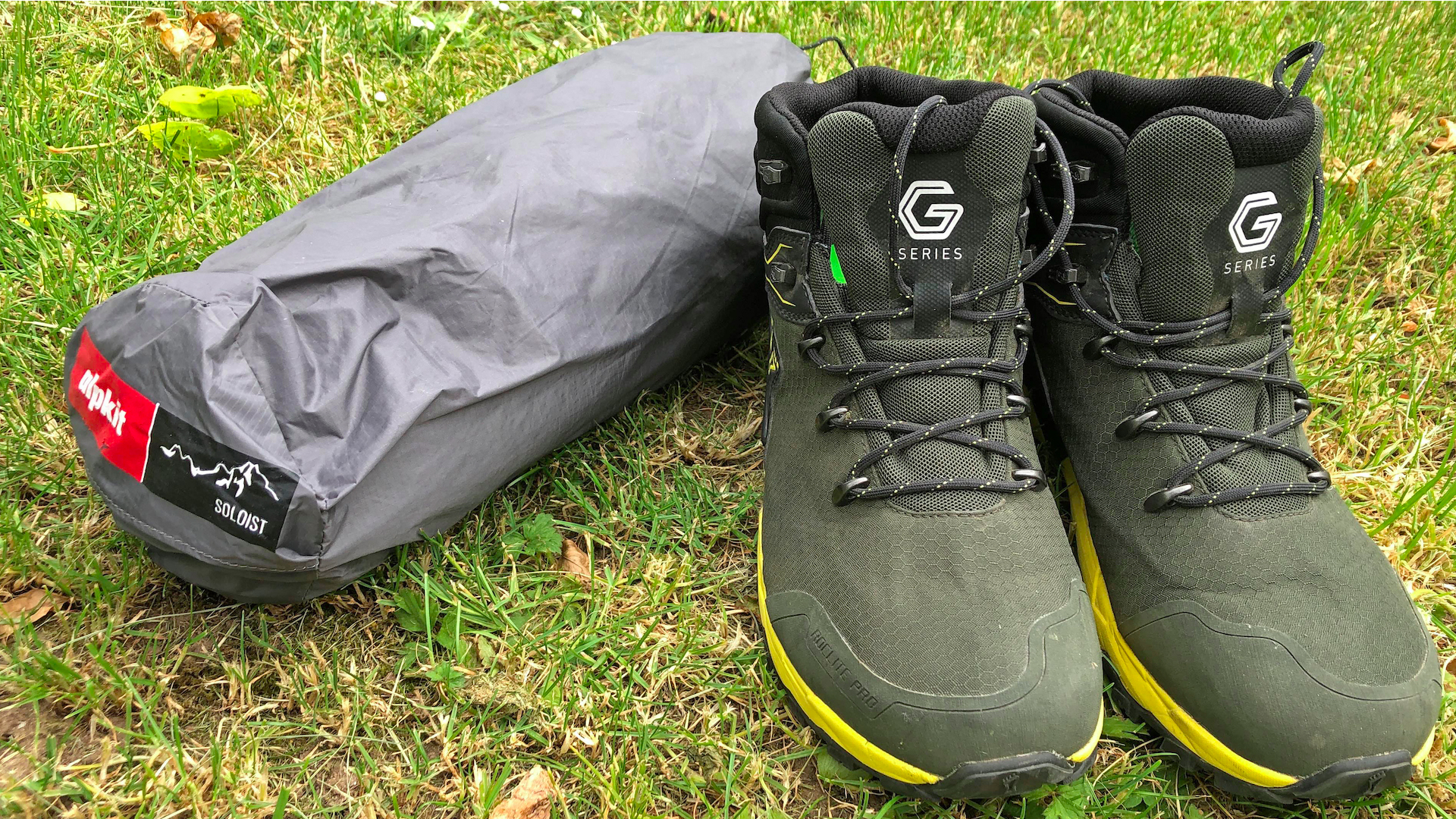
It’s quick and easy to drop too, and I love the fact the whole thing fits in the supplied bag (along with the footprint) without any real need to swear loudly at it. And once in the bag, it’s compact enough to squeeze into any size backpack, even a daypack, which is ideal for fastpackers.
My only real beef with the otherwise excellent Soloist is the aforementioned fact that the footprint doesn’t come with it (I know this is fairly standard, but it still annoys me). That, and the lack of pockets on the inside, which I would appreciate for arranging kit (especially a torch or headlamp) somewhere I can quickly locate it. The porch, too, could perhaps be a tad bigger, but that would, of course, add weight.
Overall, though, I love this tent and it’s the shelter I reach for when I’m heading off on a solo mission, or when backpacking with a group where everyone is more comfortable sleeping in individual accommodation.
